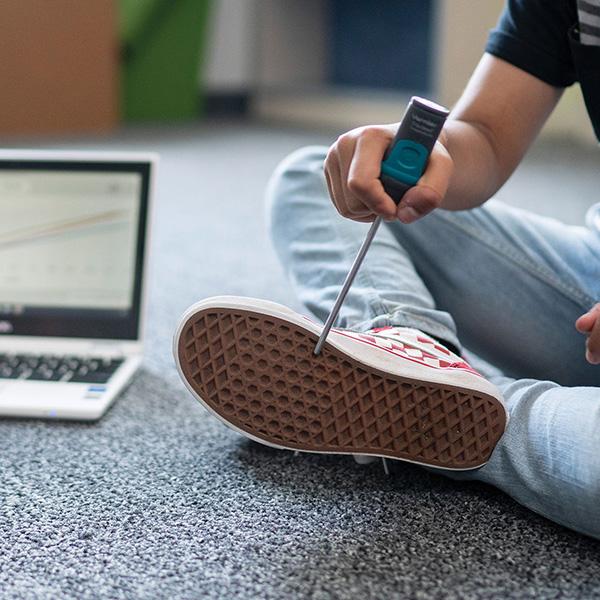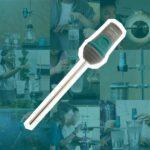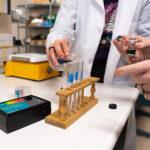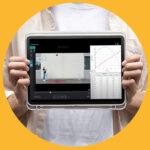
Sharing ideas and inspiration for engagement, inclusion, and excellence in STEM

It can be challenging to engage students in science activities, despite how exciting the lessons are. As an Education Technology Specialist at Vernier Software & Technology, I frequently receive phone calls and inquiries from elementary teachers looking for ways to engage their students with hands-on science experiments. Teachers are tasked with teaching an array of subjects, and as a result, many find themselves teaching science despite not having the experience to describe complicated and seemingly intimidating concepts in an effective and stimulating way. After years of attending and conducting workshops with teachers of all levels, and being a former science teacher myself, I know this to be an especially significant challenge for teachers.
First and foremost, when it comes to getting students excited about science, it’s important to make sure science is hands on. Sometimes teachers have all the materials but don’t have the knowledge to explain the science behind the experiments. Some teachers struggle to find the time to set up investigations that are both effective and engaging.
Regardless of the issue, I have four simple methods I’d love to share that will help you get your students truly excited about science while keeping you sane.
1. Ask questions to involve students and keep them interested.
The best way to get students thinking like real scientists is to treat them like real scientists. By asking your students questions about science phenomena, simple observable events that drive student inquiry, and the concepts behind them, you can awaken prior knowledge and get students more involved in making observations, predictions, and hypotheses. With their attention fully engaged, you can apply their prior knowledge to a different reaction/phenomenon that students are less familiar with—extending this knowledge into new areas. By encouraging students to use existing knowledge for new discoveries, you help build student interest and motivation to find answers.
2. Learn alongside your students.
Show your students the fun of science experimentation by demonstrating your own interest and curiosity. You don’t have to be an expert to learn alongside your students, so dive in! Become involved by asking your own questions, taking part in investigations, and engaging in interactive feedback. When students see that you’re engaged in an investigation, their curiosity is piqued, and they want to be engaged as well.
3. Save time and money with easy experiment setup.
Money can be hard to come by in schools; big experiments with delicate tools and complicated setups are often expensive and cumbersome, making them impractical for the classroom. One way to ease this burden is to simplify your roster of investigations and the tools used to conduct them. Instead of dealing with expensive and difficult equipment, invest in products that are cost effective, durable, easy to set up, and designed with students in mind. Find tools that work with technology you already have in your classroom.
4. Make it a cross-curricular event.
Demonstrate to students that science exists in all aspects of their lives by overlapping other school subjects into discussions and investigations. Integrate writing by having them write their hypotheses or apply math skills by determining temperature change using basic arithmetic. Students can even explore the history behind different science concepts. Whichever subject you choose to cross, have fun with it and use your creativity! This cross-curricular approach is not only a powerful way to stress the connection among subjects, but it’s exciting for students to better understand science in a real-world capacity.
With these four methods you’ll see more engagement from your students regardless of your prior experience teaching science. By asking questions, learning alongside your students, investing in products that help you save time and money, and doing experiments that can incorporate other subject areas, you’re sure to get your students excited about science.
At Vernier, we strive to equip teachers to not only teach science but to teach it in the most engaging way possible. Our carefully designed hands-on technology helps elementary school teachers introduce young learners to science and STEM. Students have fun while teachers help prepare students to meet the Next Generation Science Standards and state standards through lessons and experiments that support three-dimensional learning. Learn more about Vernier and how our data-collection technology brings STEM instruction for all ages to life.
Share this Article

Sign up for our newsletter
Stay in the loop! Beyond Measure delivers monthly updates on the latest news, ideas, and STEM resources from Vernier.






